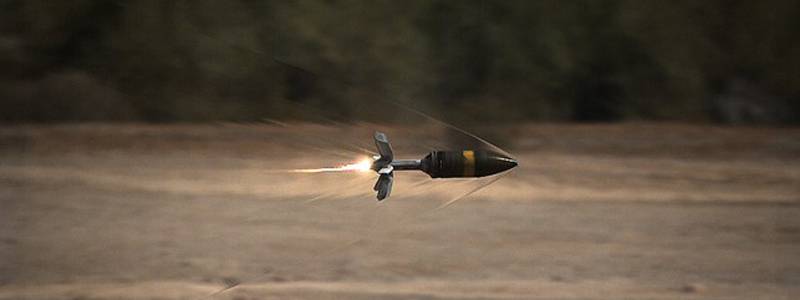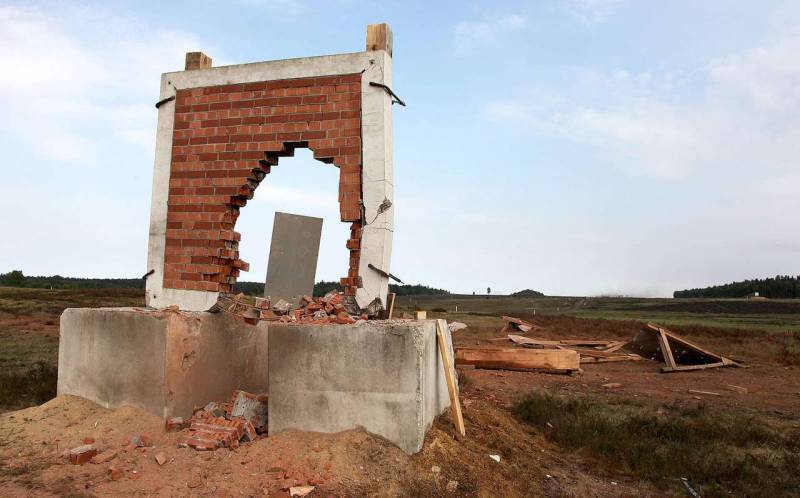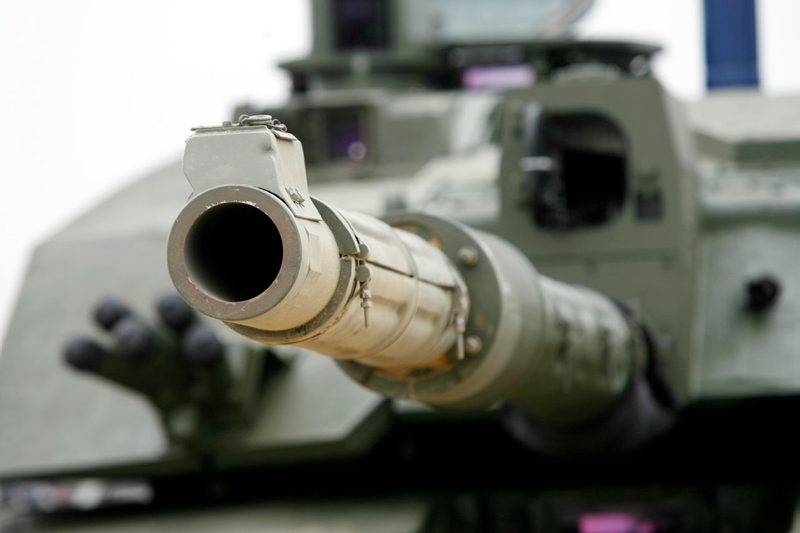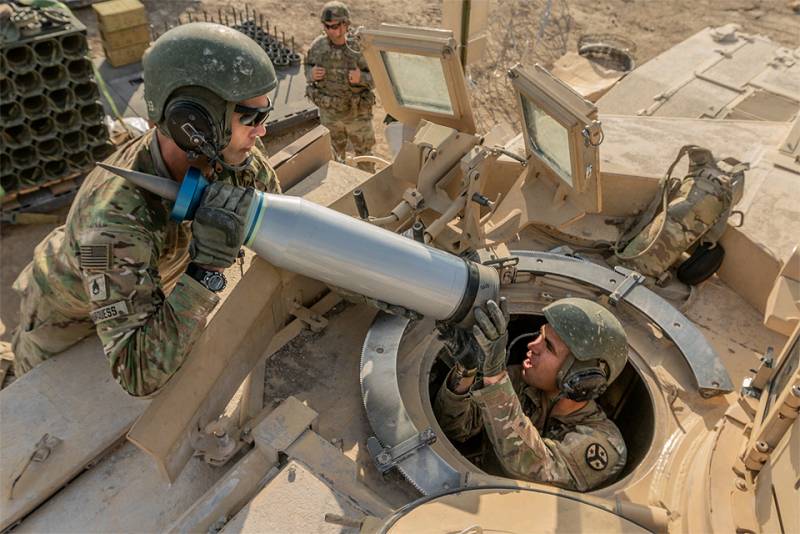City and its influence on the development of tank ammunition
US National Guard soldiers replenish Abrams tank ammunition through a hatch in the tower
In the arsenal of any army, the main battle tank (MBT) is a land platform with the highest combat potential. Superiority is achieved mainly by neutralizing other armored vehicles on the battlefield. However, unlike the traditional tank war, which is conducted on open plains or in rural areas, the future of the battlefield is likely to be the urban landscape, where the maneuver is limited, and on which the MBT will most often face such threats as dismounted fire groups with anti-tank weapons.
Protection development
In military operations in large open spaces, tanks, as a rule, take part together with infantry fighting vehicles, which are armed with a smaller caliber cannon and can deploy personnel to combat enemy infantry, while tanks provide protection from other heavy armored vehicles. In urban conditions, this operational dynamic is more difficult to maintain, since an infantry combat vehicle does not have enough space to work with a tank, and often even to occupy a position to fire and neutralize enemy infantry.
Tank operators should now be able to withstand a wider range of threats than previously thought. In addition to the traditional 105 / 120-mm cannon, firing armor-piercing shells, the tank now also needs to have a means of dealing with infantry units hiding behind walls or in shelters that are well protected from a standard kinetic projectile. There is also a growing danger of modern ATGMs, which are becoming an increasingly common means on the battlefield.
During its invasion of Lebanon in the 2006 year, Israel experienced in its experience how vulnerable tanks can be. Infantry units with powerful anti-tank weapons incapacitated and destroyed Israeli tanks, which were difficult to deal with dismounted adversary in built-up areas using only one type of projectile, most often armor-piercing.
Another factor affecting the development of kinetic armor-piercing ammunition is the development of modern means of countering, for example, dynamic protection systems (DZ) and active protection systems (SAZ). Armor-piercing shells have a long core, usually made of depleted uranium or tungsten to generate enough energy needed to pierce thick layers of armor. DZ is designed to reflect the energy of this core, therefore, in order to overcome it, new armor-piercing feathered sub-caliber projectiles (BOPS) were created with increased speeds and characteristics, as well as with a greater range to neutralize threats at long distances.
Industry focused on the development of programmable tank shells in order to ensure universal impact and combat manpower, buildings and structures, as well as more powerful BOPS, capable of destroying well-protected vehicles.

Northrop Grumman's AMP projectile will enable OBT to fight a wider range of threats, especially in populated areas.
More knock
Northrop Grumman Armament Systems (formerly Orbital ATK) in February 2017 received an 30-month contract for 45 million dollars to complete the development and qualification of its next-generation AMP (Advanced Multipurpose) universal projectile. This new 120-mm projectile is designed for the Abrams of the US Army. Options for initial and full-scale production can increase the total amount of the transaction to 119 million dollars.
A company spokesman said that the AMP projectile offers new capabilities that will allow it to fight against targets of various types. "The army intends to get a projectile with three modes, including a shock, a shock with a delay and an air detonation, in order to be able to deal with various targets, including calculations of anti-tank systems, hurried infantry, concrete walls with double reinforcement, light armored vehicles, shelters, obstacles" , - he said. It differs from the previous universal shells М830 and М830А1, which have a manual two-position fuse: shock and air explosions.
He also added that modern ATGMs are “very accurate”, have a range of 5 km and more and are equipped with powerful combat units. However, he added that “one of the shortcomings in the calculation of anti-tank systems is that they are not very mobile and often fire from a reinforced position. This is where AMP’s ability to destroy various structures, such as dugouts, concrete and brick walls, will come in handy. ”
One of the main subsystems of the new AMP projectile is a programmable fuse, which determines the projectile detonation. It is connected to the fire control system through the data transmission channel of the Abrams tank. This means that the crew can choose a method of hitting the target, which will shorten the response time to the threat on the battlefield. This is a real increase in capabilities, since a faster response means increased survivability. “The ability to quickly select an impact on a threat is also very important. If the AMP projectile is already in the breech, the operator simply needs to select the correct fuse mode and fire a shot. Everything happens much faster compared to when the fuse is first installed, and then the projectile is sent to the breech, or when the projectile fires off, after which it is necessary to choose a different type of projectile, send it to the breech and make a shot. ”
The development contract is to be completed in August 2019. A company representative confirmed that the performance tests were completed and AMP entered the stage of critical analysis of the project. Initial production and then mass production "may take about three years."
A spokesman said that “the existing 120-mm projectiles - M830, universal M830A1, cassette M1028 and concrete-borne M908 will remain in the arsenal until the end of the storage period.”
Northrop Grumman also produces an advanced 120-mm armor-piercing projectile M829A4 Advanced Kinetic Energy (AKE). This BOPS is capable of fighting current and future tanks by penetrating the third generation DZ and overcoming the majority of SAZs. The representative could not tell about the work of the projectile, but noted that the core is made of depleted uranium.
The M829А4 projectile, which passed the qualification tests in the 2016 year, is based on the previous versions, which were put into service in the 1991 year. The company is negotiating with the army to extend its production to 2022, for a fee of at least 80 million.
The combination of AMP and M829А4 shells, which will be included in the tank ammunition, will allow you to fight almost all the threats encountered on the battlefield. The shells of the M829A series are intended only for the US armed forces, since the army prefers not the tungsten core, but the core of dining uranium. At the same time, the representative noted that Northrop qualified a shell with a tungsten core, giving it the designation Kinetic Energy Tungsten (KET), since “several European armies” had shown interest in it. Most European countries have chosen tungsten cores because of UN concerns about depleted uranium.

AMP projectile in flight. Programmable fuse allows you to detonate the projectile at different times to neutralize different goals.
Three-stage upgrade
The German company Rheinmetall is also concerned about the development of advanced tank protection systems that need to be overcome, citing as an example the new Russian T-14 “Armata” tank with the fourth generation DZ system.
Christoph Henselman from Rheinmetall Waffe Munition said: “We expect that in the near future, in addition to some new systems, such as the T-14, DZ will be used mainly to modernize outdated, but still exploited in large quantities MBT. Therefore, suppliers of ammunition from Western countries now have a new “complex goal” in front of them, against which their shells must prove their effectiveness. One of the most important tasks is to deliver much more kinetic energy to the target, even at large distances. ” Rheinmetall tries to go in two different ways to increase the kinetic energy of anti-tank shells.
First, she intends to develop larger-caliber shells as part of her project for the advanced 130-mm main tank armament. In June, the company announced that the 130-mm demo was used in bench testing to compare it with existing 120-mm L55 / L5SA1 X guns. The plan envisages the development of a demonstration model of an uninhabited tower with an 130-mm gun, which could be installed on a prospective MGCS machine (Main Ground Combat System) or as part of the modernization of Leopard 2 tanks.
However, for the short term, Rheinmetall is working to improve the performance of existing 120-mm BOPS, which it intends to achieve in three stages. The first stage included the development of a new high-pressure gun L55A1. She passed the qualification tests at the end of the 2017 of the year and will be installed on the Leopard 2 MBT by the German and Danish armies by the end of the 2018 of the year. Henselman said that both countries "have already decided to replace the existing cannon with a new version of the L55A1 as part of their modernization programs."
"This weapon with increased pressure is a necessary and necessary condition for firing next-generation armor-piercing shells that will operate at a higher pressure than previous projectiles."
At the second stage, the development of a modified tank projectile with the DM63plus index is envisaged, in which “a core identical to the core of the previous version of DM63A1 is used, but the throwing substance is more energy efficient”. This projectile is scheduled to qualify in the 2021 year, and mass production will begin in the 2022 year.
At the third stage, a completely new 120-mm projectile, which has received the KE 2022 index, is being developed. Henselman explained that it will include “further improvements in the throwing system, a new core design and a lower weight tray”. Qualification tests of this projectile are scheduled for 2023 year.
Rheinmetall upgrades 68 German tanks Leopard 2A4, 16 tanks 2А6 and 20 tanks 2А7 to standard 2A7V under a contract worth 138 million dollars; The first deliveries of the “V” variant are scheduled for 2020 year. The company said that 2А4 tanks will receive a new gun L55A1 and all 104 upgraded tanks will be able to fire a universal shell Rheinmetall DM11.
The DM11 projectile was first delivered to the US Marine Corps in 2011, and some time later it was tested in combat conditions in Afghanistan. Rheinmetall calls this programmable high-explosive fragmentation projectile additional ammunition that can fight all targets except MBT and heavily armored platforms. “The modular design of this projectile allows, if necessary, to continuously improve / replace individual components (fuse, warhead, propulsion compartment) without disposing of the entire projectile, which indicates its great modernization potential,” said Henselmann. - The next scheduled update will be the integration of the new advanced fuse from RWM in 2019, after which its index will change to DM11A1.
Henselman said that access to technology is much more energy efficient in terms of propulsion system means that opponents will be successfully neutralized at greater distances with better efficiency. “In wartime, the threat of electronic warfare and jamming is becoming more and more dangerous. Simple technology like the kinetic core with its specific advantages (fast, accurate and low-cost compared to missiles) still cannot successfully detect and intercept even complex protection systems. This means that in the 21 century, in a tank duel, preference will be given to conventional barrel armament.

The DM11 universal projectile can pierce walls to defeat manpower hiding in buildings. Rheinmetall develops DM11A1 with improved fuse
Universal ammunition
The French company Nexter Munitions became the third largest producer of ammunition in Europe after the acquisition of Belgian Mesag and Italian Simmel Difensa in 2014.
Nexter is developing a SHARD (Solution Hardened Armor Defeat) projectile, which will significantly increase its armor-piercing characteristics. However, a company representative could not provide any information on this project.
Nexter is developing the 120-mm Universal Shot Multi-Mode Munition (M3M), which was chosen by the French Defense Procurement Directorate for the Leclerc tank as part of the Army Scorpion Army Support Program for new and upgraded platforms. According to her representative, "The M3M is specifically designed to combat a wide range of targets, from snipers and unarmored vehicles to light and medium armored vehicles and infrastructure." In addition to these threats, the M3M "is capable of causing serious damage to heavy-armored vehicles, for example, MBT." The projectile can be programmed by the operator-gunner using the fire control system, when it is already in the chamber. The projectile has an air blast mode that allows you to fight with dispersed orders of manpower in the trenches or outside the walls by emitting a cloud of tungsten ready-made destructive elements.
Impact mode (instantaneous detonation) is designed for use on light and medium armored vehicles and some heavily armored vehicles and even on buildings and structures. The delayed detonation mode can be selected to neutralize targets in buildings due to the action of a blast wave, which is initiated after a piercing wall.
According to the company Nexter, the MZM projectile "was thoroughly tested and thoroughly tested at the French shooting range in the 2016 year, and its development continues." The company does not comment on what stage the project is and whether contracts for its mass production have been concluded.
The Norwegian company Nammo, following the global trend, has also developed its universal high-explosive high-explosive tracer shells with two modes, percussion and delayed. The non-T projectile also has a cassette version with tungsten striking elements designed to combat live strength.
General Dynamics Ordnance and Tactical Systems (GD-OTS) is a Nammo distributor in the United States; she modified the non-T projectile for firing from the Abrams tank gun. The company received a contract for $ 93 million for the supply of a NE-T shell to Iraq under an agreement signed in 2017, which ends in 2022. GD-OTS also manufactures this projectile under license from the Canadian Army for Leopard 2 tanks.
120-mm cassette M1028 company GD-OTS, included in the ammunition Abrams tank. allows you to deal with manpower at distances 200-500 meters due to the release of "a massive number of fragments almost from the muzzle." The company also develops a KE-W A120 1 shot, which is a BOPS with a tungsten core.

The 120-mm smoothbore gun may replace the rifled gun of the Challenger 2 tank
Current Projects
The British Army’s Challenger 2 tanks are equipped with a Royal Ordnance company’s BOPS with depleted uranium core L27 (CHARM 3). This tank is armed with a L30A1 rifled gun, which is different from the tanks of other NATO armies that operate tanks with smooth-bore guns. The British army prefers to use its armor-piercing high-explosive projectile with a crushable HESH head (High-Explosive Squash Head) along with BOPS CHARM 3 and as a result cannot use projectiles for smooth-bore guns that other companies are developing.
However, as part of the Challenger 2 tank life extension program, the installation of an 120-mm smoothbore gun is not excluded. Rheinmetall is competing with the BAE / General Dynamics group for this billion-dollar retrofit program, which is expected to be resolved later this year. The combination of the Rheinmetall L55 cannon and the DM63 projectile offered by Rheinmetall is more effective than the combination of the Challenger tank cannon and the CHARM 3 projectile and could give the tank the opportunity to use new ammunition designs. However, a simple replacement of the barrel case will not do, you may need to replace the entire tower.
Turkey is striving to become a self-sufficient country in the field of military equipment and armaments, in connection with which it is developing its own manufacturing facilities for the production of ammunition. The Turkish company MKEK has tested 120-mm high-explosive fragmentation shells and plans to produce such shells for the Turkish army up to 2018 by the end of 3000.
The country pays special attention to research in the field of ammunition in connection with its participation in the fight against IS (prohibited in the Russian Federation) and Kurdish groups. She intends to adapt it for a new set of goals, rather to combat manpower, rather than traditional armored vehicles.
The development of 120-mm tank shells continues and, although the search for solutions in the field of ammunition to combat manpower and a wider set of goals does not stop, time will tell whether they allow the MBT to become a suitable tool for urban operations compared to other platforms. Meanwhile, the proliferation of improved tank protection systems means that ammunition manufacturers will also look for ways to increase the armor-piercing ability of their armor-piercing shells.
On the materials of the sites:
www.nationaldefensemagazine.org
www.rheinmetall.com
www.northropgrumman.com
www.nexter-group.fr
www.nammo.com
www.baesystems.com
www.militarytimes.com
www.wikipedia.org
pinterest.com
defense-update.com

Information